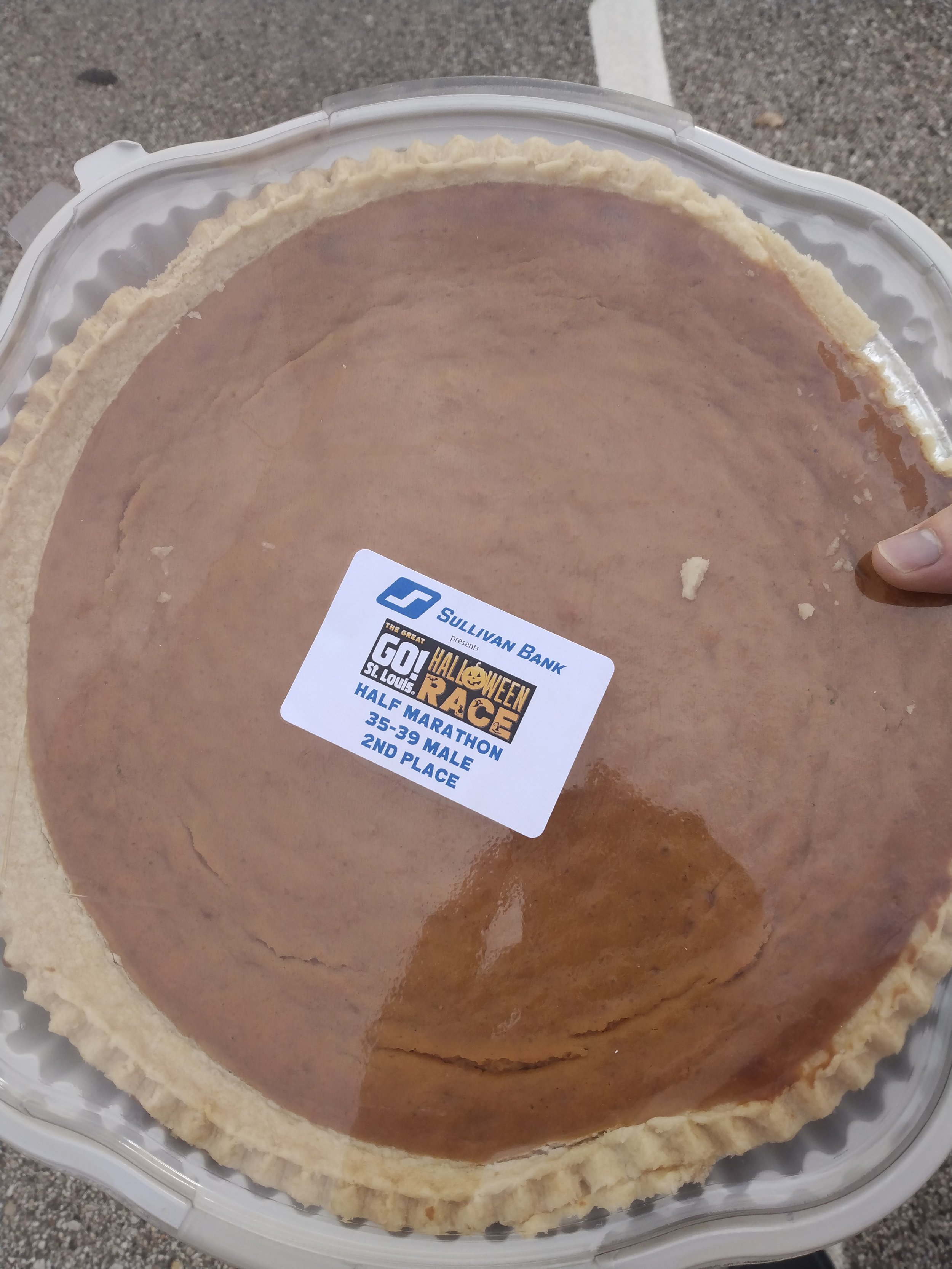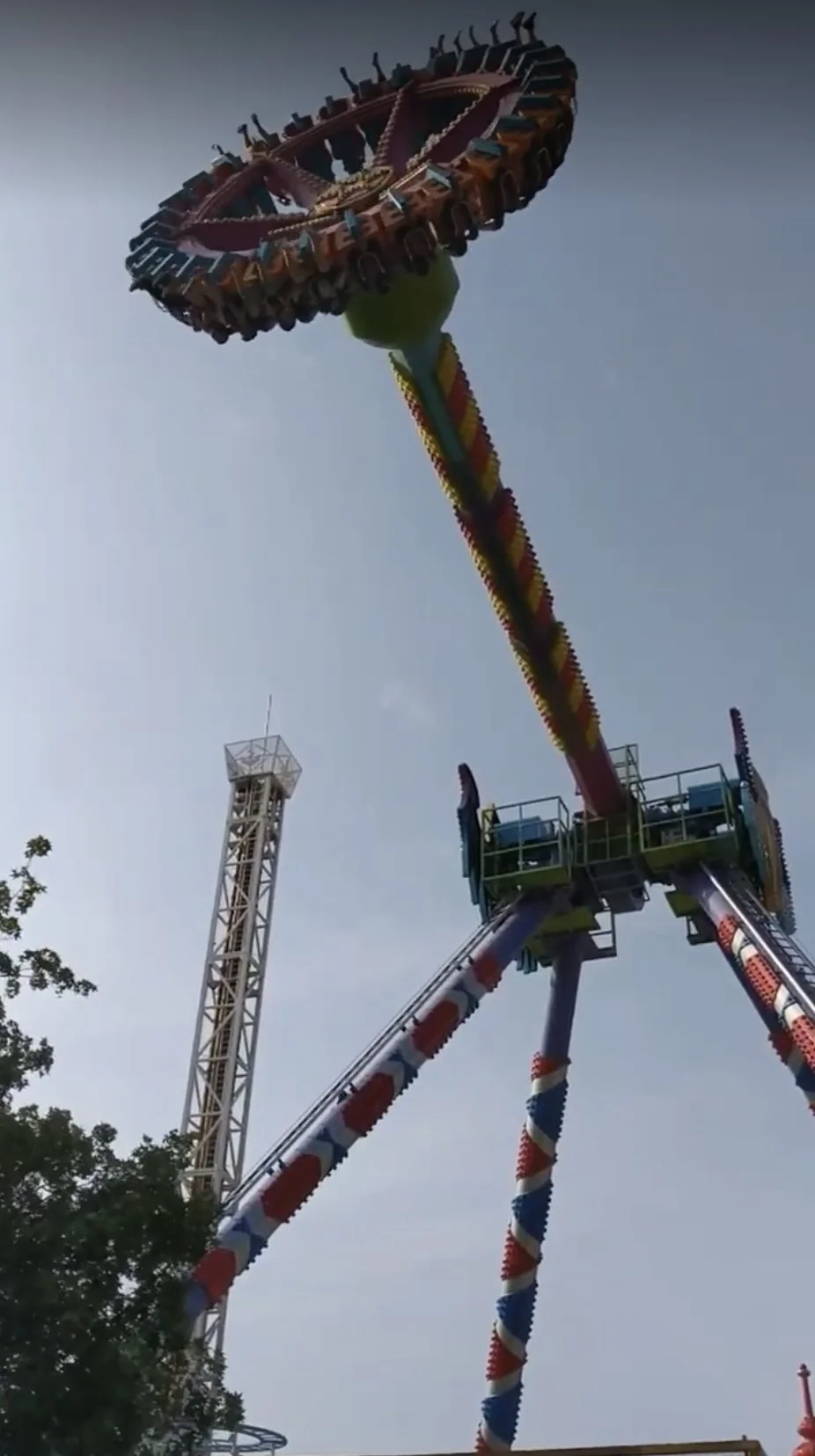Following my San Diego half marathon, I needed about a week’s worth of physical recovery. The few jogs I did were light, easy, and brief. My legs were sore.
I couldn’t rest for too long though, because I signed up to run the Saint Louis GO! Halloween half-marathon just three weeks after San Diego. Running two half-marathons in three weeks is asking a lot from a body that has never run an event at that distance before.
So I took an easy week, followed it with a more traditional training week, and then followed that with a “taper” week.
I don’t consider taper to be recovery, though there is some recovery involved. It is a reduction in training volume, but the training conducted still has a focus on race-specific movement. Taper is the final tuning of the instrument before the symphony. The musician has already rehearsed and the dexterity has already been earned through hours of practice; there are just a few necessary tweaks needed to deliver a rousing melody at the right pitch.
As running is somewhat new to me, I had no idea if my plan would work, or if it was feasible to run a second decent half marathon within weeks of the first one.
Physically, I felt sluggish and lethargic until about three days before the Halloween half-marathon. I had about three days of decent sleep leading into the event and ate mostly natural foods between my events, however. It wasn’t until two days before the Halloween half that I believed it could be a pretty good run; I woke up one morning and suddenly felt like my usual self.
The hours leading to the start were a blur. I arrived at the race with my girlfriend (who ran it with me), stretched, had an energy gel, and lined up near the start line. I felt loose and relaxed. I promised myself that I would not take this race out too fast (I was out way, way too fast on the previous one).
The challenge with this event was that it mixed 5k, 10k, and half marathon participants in the same racing pool. So as bodies propelled forward at the start, I had no idea who was running what.
Another challenge was that this event featured much more elevation than the San Diego event via some brutally steep hills. Whereas my San Diego race had about 80 feet total of elevation gain, this was estimated to have 500 feet of elevation gain.
I felt the elevation during the first mile, which was up a steep incline. Runners shot forward at fast cadences.
Hold back, I told myself. Just hold back.
As my calves tightened and the hill ahead of me steepened, I slowed my cadence. People flew past me. This was alarming. The race was just starting, and I was falling behind. I decided I’d let them take the lead here. This later proved to be the right move. It was only one mile of more than thirteen, and were plenty more hills to challenge me.
I passed my first mile marker at 6:26. This was about 20 seconds slower than my first mile in San Diego. I felt fresh, though, in spite of the early hill. I had 12 miles to make up ground.
I accelerated downhill, letting my longer stride give an advantage as I loped downward, and passed a few runners.
Mile three saw another hill, this one longer and equally as steep. My lungs heaved more than I wanted them to. I knew that I was still off of my San Diego pace, but still, I had to let myself slow a little. So I did. Then, like after the first mile, I accelerated downhill.
Mile four, mile five, mile six. I made no moves. I didn’t accelerate, or really do anything interesting. I just sort of plodded forward. But my pace was pretty good, and that was enough.
At one point near mile five, my pace faltered and several runners passed me. I felt my legs tighten and my hear pump louder. Then I arrived at an aid station and grabbed some water. I recognized one of the volunteers at the station from my running group.
“Let’s go Matt, you’re doing great!” He shouted. Suddenly my pain evaporated and I accelerated forward. I was back on pace.
I am Virgo, so I studied the course before the event. I knew that the hills only encompassed the first six miles of the race. The next seven miles would be relatively flat. A successful race, I decided, would be dependent on feeling fresh for the final seven miles.
Mile six proved to be devastating. It was the steepest hill yet. Winding and twisting along streets that cut through a rural Missouri landscape, it stretched brutally upward and seemed to have no end. Was this a hill or a mountain? My pace slowed and alarmingly so. My legs grew heavy and suddenly it was like one of those bad dreams where you’re running from a threat, but standing in place. For a brief moment in time I was a full two minutes slower than my goal pace. A runner passed me. Still, the fatigue was mounting. I knew I had to risk a bad time and slow down.
Then we reached the hill’s apex, and I realized that I was quickly recovering, and before I knew it I wasn’t hurting all that bad. I accelerated downhill again and found myself running shoulder-to-shoulder with the runner who had just passed me.
“How you doing?” He said. I was out of breath and managed to say, “Not bad.” I’m sure my face said otherwise. That hill hurt. I felt confident that I had enough energy to finish the race, but damn… it hurt.
I regained the lead over him, determined not to let up my quickening tempo, but heard his feet padding the earth close behind me. We passed mile seven. Six miles to go. Now the race begins.
I checked my watch. I was now even with my San Diego running pace. In that event, my pace had slowed down by mile four. I was relatively steady today and making ground on that race. This meant I had a shot at a best time.
Mile 8, mile 9, mile 10. Flat earth ahead of me, edged by trees and walls of their yellow and orange foliage. Every mile looks like the one before. My legs steadily tightening. My cadence steadily slowing. What was effortless thirty minutes ago was suddenly a struggle. Suddenly the aches in my calves from the earlier hills are in pain. My breathing is heavier. Here we go. Just focus on getting through this mile.
Mile 11. I’m still in this. I no longer have an acceleration in me; the fatigue is too much. It’s a matter of maintaining pace now. I hear the familiar runner behind me speaking to me.
“Thanks,” he says. “Your pace is bringing out the best in me.” He’s hurting too.
“Likewise,” I reply. There are no losers here. I love the camaraderie. We want each other to succeed. “We’ll get to the finish and hug,” I say. And so we run on.
Mile 12. Where is my mind? It’s on my legs. I’m tightening too much. The pain is getting intense in my calves, and there’s nothing I can do about it. I try to change my running form a little so that I land on my heels, not my forefeet. Anything to keep the pain at bay. But that doesn’t work either, so I stick with what’s natural for me.
I’m forcing myself to keep pace, but my pace is still slowing. However, it’s not slowing as much as it did in San Diego.
The last mile. My running rival passes me. I have to let him go. I’m taxed. To try and stay ahead risks injury. Better to just chug along. Besides, if I leave a little reserve in the tank, I’ll have enough for another best time on the next run. But damn it hurts. My mind starts screaming, “Just walk it in!” But I know I can’t do that. I’m so close to making it. I won’t let it count for myself if I walk.
Suddenly a left turn and I see the inflatable arch at the finish. I’m right there. One more runner passes me, and I notice it’s someone in my running group. He’s a great guy, and I’m glad he makes it. I spring to life and pick up my cadence. I run through the finish line, then hunch over. I’m in serious pain; the final mile was a blur. Everything hurts. I can’t pinpoint any exact source of agony. I high five my running group partner. I exchange a hug with the other runner who passed me on that final mile.
“This is your first year running?” He says. “Damn, you’re a natural at these things.”
My final time was more than a minute faster than it was in San Diego. And in spite of a slowdown over the final mile, I paced this one better. It was a best time. More of a struggle, but a best time.
I finished second overall in my age group. Not bad for a swimmer! And there were over 800 participants.
I got a pumpkin pie as a prize. I then ate some donuts and had a latte. I made it. The season is over. The journey is complete.
My running quest ended with the fastest run of my life. I’m triumphant, or that’s how it feels. But what did I win? What happens after the curtains are drawn? Where to next? What’s the aftermath? What is the grand life epiphany? Have I solved some deeper existential crisis?
I have some water and note only my own worn body and a free pumpkin pie. But the fall air braces me and the smiles at the finish are contagious.
I wanted to prove that I could bounce back, that the car hit last year wouldn’t take me down, that I was still alive, and frankly, that I still had life inside of me. I wanted to prove that I’d return, and run farther and faster than I ever had in my life. This was a personal battle. I didn’t give a damn what anyone thought about it. It’s a good thing I don’t, because running at these lengths is very, very personal.
My previously injured foot feels good. I feel good. I’ll take a few weeks off of running before prepping for the full marathon though.
Until next time!

